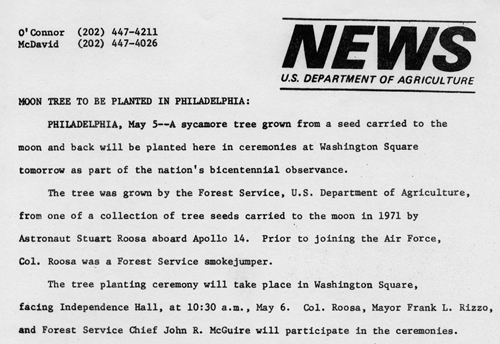Houston, We Have Moon Trees
Forty years ago last week, Apollo 14 returned from its nine-day journey to the moon and splashed down safely in the Pacific Ocean. The three-man crew consisted of Commander Alan Shepard, Command Module Pilot Stuart Roosa, and Lunar Module Pilot Edgar Mitchell. The Apollo 14 mission was the third successful moon landing, and is mostly remembered for Shepard hitting golf balls on the lunar surface. This week, in addition to the usual anniversary attention, the mission was also back in the news because of a USA Today article on NASA's search for the long-lost "Moon Trees."
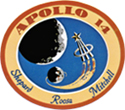 Moon Trees came about through the work of Astronaut Stuart Roosa. Before joining the Air Force, Roosa had worked as a U.S. Forest Service smokejumper, dropping into at least four active fires in Oregon and California during the 1953 fire season. When later selected for the Apollo 14 mission, the Forest Service asked him to consider carrying some tree seeds with him into space. Roosa agreed and decided to bring seeds from loblolly pine, sycamore, sweet gum, redwood, and Douglas fir trees. He carried the seeds - around 500 in total - in a small container in his personal bag.
Moon Trees came about through the work of Astronaut Stuart Roosa. Before joining the Air Force, Roosa had worked as a U.S. Forest Service smokejumper, dropping into at least four active fires in Oregon and California during the 1953 fire season. When later selected for the Apollo 14 mission, the Forest Service asked him to consider carrying some tree seeds with him into space. Roosa agreed and decided to bring seeds from loblolly pine, sycamore, sweet gum, redwood, and Douglas fir trees. He carried the seeds - around 500 in total - in a small container in his personal bag.
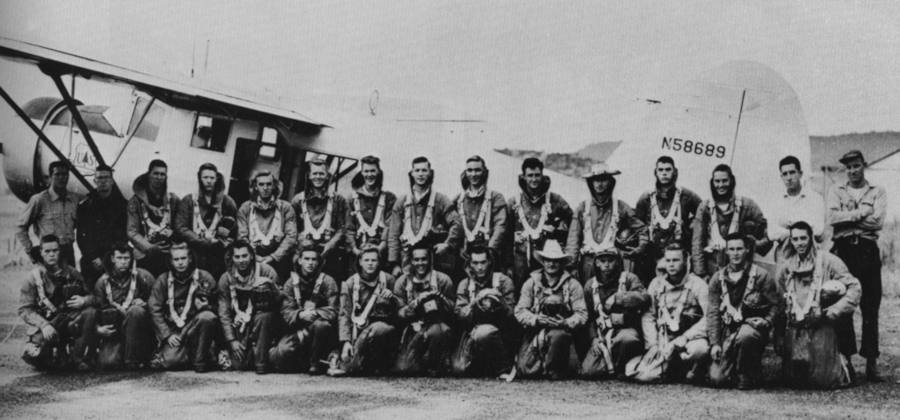
USFS Smokejumpers, class of 1953. Roosa is top row, fourth from left.
Upon the return to Earth, the seed canister burst after being exposed to a vacuum, scattering and mixing up the seeds. Nonetheless, the seeds were recollected and sent off to two research facilities: the Southern Forest Research Station in Gulfport, Mississippi, and the Western Research Station in Placerville, California. The seeds proved viable, giving the Forest Service more than 400 Moon Tree seedlings.
The first official Moon Tree planting ceremony was held in Philadelphia's Washington Square Park on May 6, 1975. Roosa, Forest Service Chief John McGuire, Philadelphia Mayor Frank Rizzo, Woodsy Owl, and many others were on hand as a sycamore seedling was planted in the northeast corner of the park.
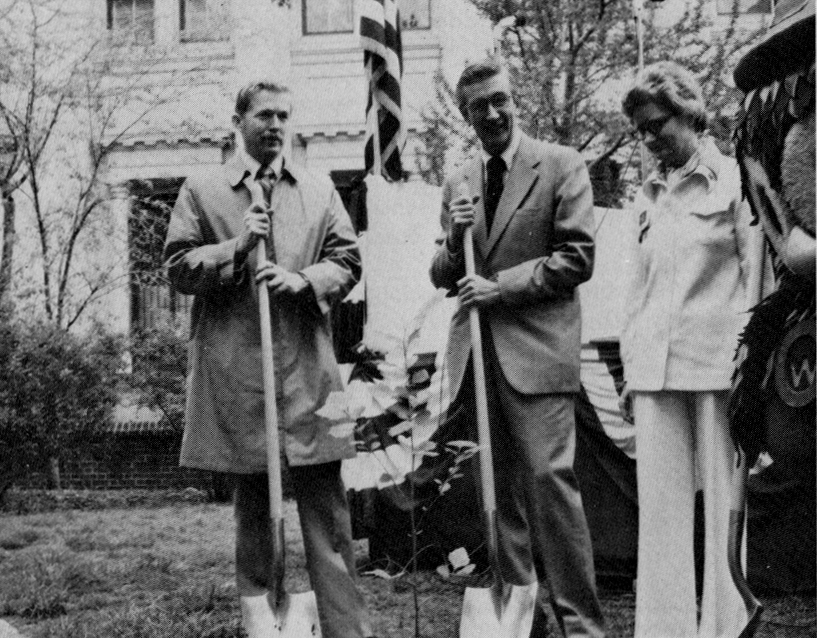
Left to right: Stuart Roosa, John McGuire, Ernesta Ballard, and Woodsy Owl at first Moon Tree planting ceremony.
Following the Philadelphia planting, many other Moon Trees were given away and planted all over the country as part of U.S. bicentennial celebrations during 1975 and 1976. A loblolly pine Moon Tree seedling was planted at the White House (although it would not survive). Seedlings were also sent to other countries, including Japan, Brazil, and Switzerland.
Mostly forgotten, many of the trees can still be found today if you know where to look. Dave Williams, a curator at NASA's National Space Science Data Center maintains an online list of the known Moon Tree locations. You can also still buy your own Moon Tree seeds from the American Forests organization's Historic Trees Program.
In honor of the 40th anniversary of the Apollo 14 mission, and the ongoing search for the surviving Moon Trees, here are a few relevant items from the Forest History Society Archives:

Stuart Roosa (right) holding container of moon tree seeds, with Associate Chief of the U.S. Forest Service Art Greeley (left) in Washington, DC, 1971.
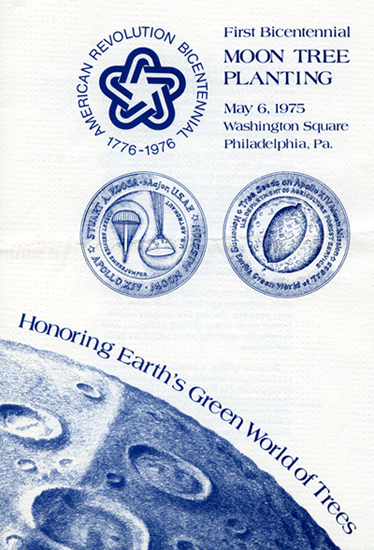
First Moon Tree Planting offical program, Philadelphia, May 6, 1975. Note the smokejumper on the Roosa logo.

Left to Right: George Vitas, John McGuire, and Stuart Roosa, May 6, 1975.

Master of Ceremonies Glenn Kovar at First Moon Tree planting ceremony.
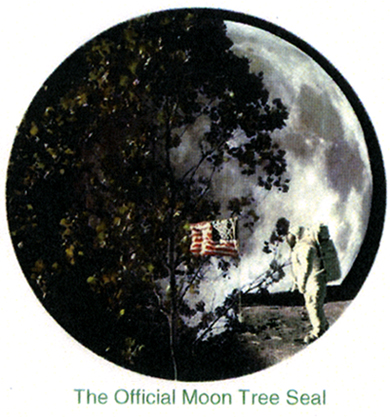
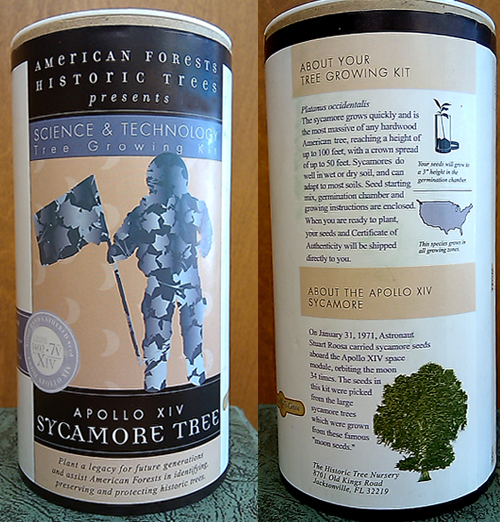
Apollo XIV sycamore seeds, distributed by American Forests.


